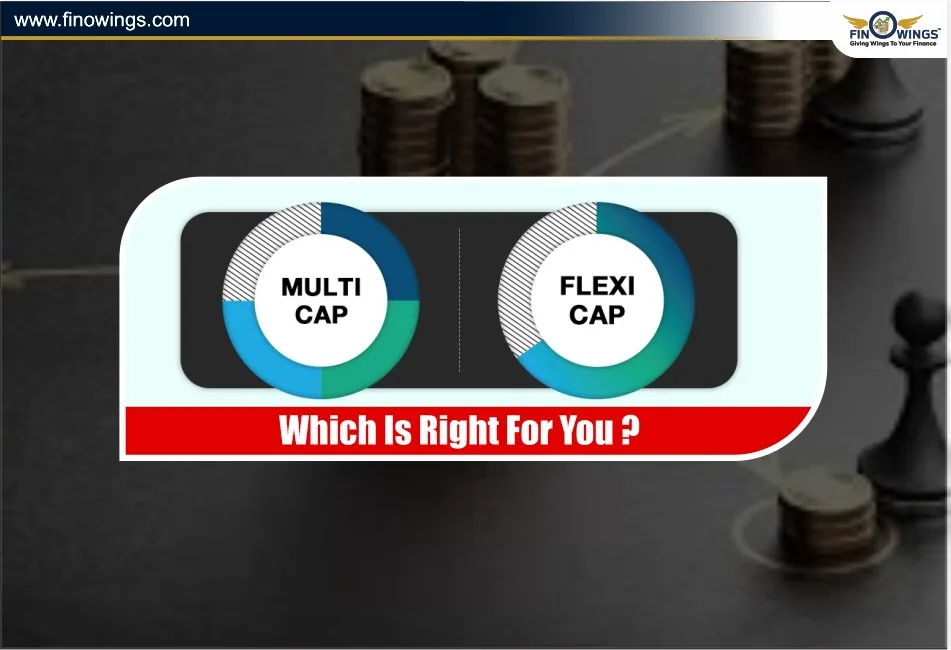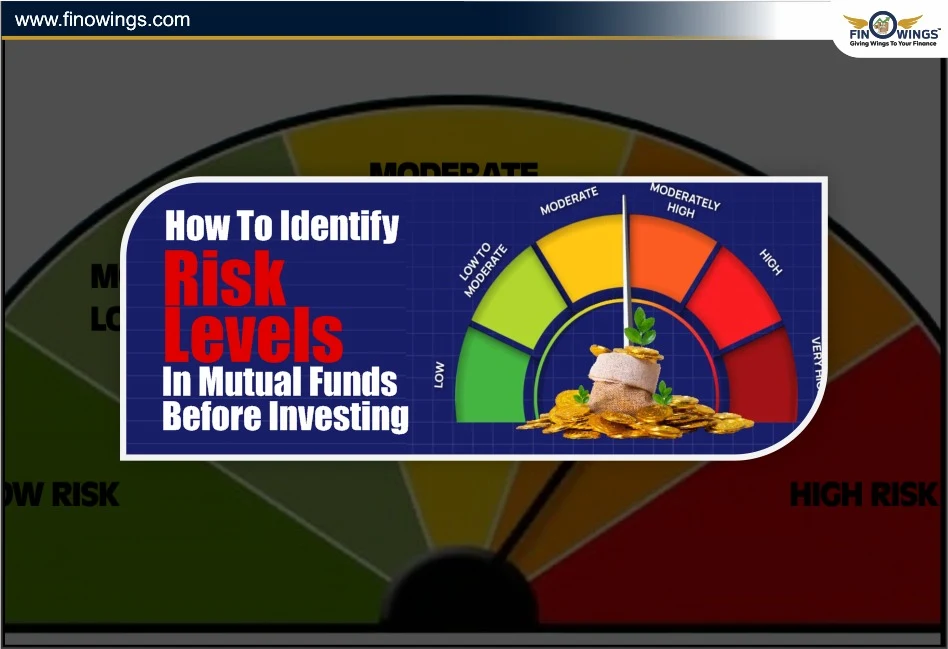Home >> Blog >> Multicap vs Flexicap Funds: Which Is Right for You?
Multicap vs Flexicap Funds: Which Is Right for You?

Table of Contents
- What are Multicap Funds?
- What Are Flexicap Funds?
- Flexicap Fund Benefits
- Multicap vs Flexicap: Key Differences
- Investment Strategy for Multicap Funds
- Who must consider Multicap funds?
- Flexicap Fund Benefits: Why They are a Favourite Among Investors?
- Select Multicap Funds if:
- Select Flexicap Funds if:
- Conclusion
When it comes to Multicap and Flexicap funds, a mutual fund investor may be at a loss, as they both invest across large, mid and small cap companies. However, despite both investing across multiple market segments, they differ greatly in terms of varying investment strategies, risk profiles, and long-run return expectations.
In order to provide a greater understanding of the difference, this guide will be of great help to help decide the right category based on one's financial goals, risk tolerance, and investment horizon.
What are Multicap Funds?
Multicap funds are diversified equity mutual funds that invest a minimum of:
At least 25% across all cap stocks.
At least 25% in mid-cap stocks.
At least 25% in small-cap stocks.
In order for mutual funds to fully diversify, there is a 75% minimum investment requirement for each category of stocks to help diversify.
Primary Qualities of Multicap Funds:
-
Well allocated exposure across all market caps.
-
Larger exposure to small caps, thus being a bit more aggressive side.
-
Great for those who want a mixture of conservative (large caps) and aggressive (smaller & mid caps) returns.
There are limits on how extreme a shift a fund manager is able to take across stocks in a particular market. Because the allocation is so fixed.
What Are Flexicap Funds?
As the name suggests, Flexicap funds offer the greatest flexibility. They are able to invest:
0-100% in large caps.
0-100% in mid caps.
0-100% in small caps.
There are no limitations on the percentage that can be allocated to each group.
Flexicap Fund Benefits
Fund managers can rotate market allocations according to market cycles. If the fund manager decides to shift the investment to large caps, the downside risk on large caps decreases, which is beneficial during a market downturn. The fund managers can increase the exposure to mid and small caps, which is beneficial during a market uptick.
This makes Flexicap funds ideal for long-term investors who are comfortable with a market-driven allocation.
This is why Flexicap funds are dynamic funds perfect for uncertain market conditions.
Multicap vs Flexicap: Key Differences
Here is a clear side-by-side comparison:-
|
Feature |
Multicap Funds |
Flexicap Funds |
|
SEBI Rules |
Minimum 25% each in large, mid, small caps |
No mandatory allocation limits |
|
Flexibility |
Limited |
Very high |
|
Risk Level |
Moderately high due to small-cap exposure |
Depends on the fund manager's asset rotation |
|
Who Controls Allocation |
SEBI’s fixed structure |
Fund manager |
|
Market Cycle Handling |
Less adaptive |
Highly adaptive |
|
Suitable For |
Investors wanting balanced diversification |
Investors wanting an active, dynamic allocation |
Understanding these differences helps in picking the right category based on your risk appetite.
Investment Strategy for Multicap Funds
A core part of choosing the right fund is understanding the investment strategy for multicap funds.
How Multicap funds invest:
They maintain equal exposure across market segments regardless of market cycles. They focus on bottom-up stock picking to ensure strong companies in all categories are included. They benefit most during broad market rallies when all segments-large, mid, and small-perform well.
Who must consider Multicap funds?
-
Broad Diversification - Investors who need it.
-
Moderate Volatility - Investors who are fine with it.
-
5-7 Years - Investors with a long-term horizon.
-
Uniform exposure to all market caps.
With a minimum of 25% of the portfolio being invested in small caps, the risk level will be higher than pure large-cap funds.
Flexicap Fund Benefits: Why They are a Favourite Among Investors?
Flexicap funds are one of the most sought-after and loved categories today owing to their flexibility.
Key Flexicap fund benefits are:
1. Flexibility to Rebalance Along with Market Cycles
Fund managers can decrease small-cap exposure and increase it during bull periods.
2. Lower Volatility During a Market Correction
Switching to large caps or high-quality mid caps reduces risk.
3. Higher Return Potential During a Phase of Growth
Managers can boost investments in mid and small caps when the market is high.
4. Excellent for Long Term Wealth Creation
Due to their flexibility, these funds can take advantage of new sectors and market opportunities.
5. Professional Allocation
Fund managers take the guesswork out with data-driven decisions, making it ideal for investors who want to avoid tracking the market every day.
6. Risk Comparison: Multicap vs Flexicap
Multicap – Risks
- They are required to maintain 25% in small caps leading to greater volatility in the fund.
- They cannot avoid the market conditions due to the fixed allocation.
- Losses may occur in the fund during small cap corrections in the market.
Flexicap – Risks
- Risk is entirely up to the fund manager.
- Could be aggressive or conservative based on their allocations.
- If managed correctly, it should show better risk-adjusted returns.
On average, Flexicap funds display smoother returns, but Multicap funds can lead the market when small caps are in a rally.
Your selection of Multicap vs Flexicap depends on the individual:
Select Multicap Funds if:
- You wish to have equal exposure to all market segments.
- You would like a diversified portfolio based on a set of rules.
- You are okay with experiencing volatility.
- You think small caps will perform well in the coming years.
Select Flexicap Funds if:
- You wish to have the option of flexibility with their allocations.
- You would like to have stability during downturns in the market.
- You have confidence that fund managers will make the right allocation decisions.
- You prefer long term compounding with adaptable risk control.
Both are great, but they perform differently for the needs of the investor.
Conclusion
For your investment portfolio, is it Multicap or Flexicap? It depends on how much value you place on your investment portfolio's ability to react to changing market conditions. Multicap is very structured, so you will have diversified exposure, though with increased volatility with the small-cap add-ons. Flexicap funds are great since you have the most freedom, but it is presumably for investors who want full control.
Both types of funds can have a place in your portfolio, so think about your financial goals, risk appetite, and investment horizon in order to zone in on the right choice.
DISCLAIMER: This blog is NOT any buy or sell recommendation. No investment or trading advice is given. The content is purely for educational and information purposes only. Always consult your eligible financial advisor for investment-related decisions.
Author
Frequently Asked Questions
The biggest difference is allocation flexibility. Multicap funds must invest 25% each in large, mid, and small caps, while Flexicap funds can invest 0–100% in any category depending on market conditions and fund manager decisions.
Beginners who want a stable, rule-based diversification usually prefer Multicap funds. Flexicap funds suit investors who can handle dynamic allocation changes and trust the fund manager’s strategy.
Flexicap risk depends on the fund manager’s allocation. They may reduce risk in downturns by shifting to large caps. Multicap funds carry built-in small-cap exposure, which creates higher volatility during market corrections.
Performance varies by market cycle. Flexicap funds often give better risk-adjusted returns due to flexibility. Multicap funds tend to perform strongly when small and mid-caps rally.
Choose Multicap funds if you want equal exposure to all market caps and accept small-cap volatility. Choose Flexicap funds if you want adaptive risk control, dynamic allocation, and long-term compounding driven by market opportunities.












.webp)






